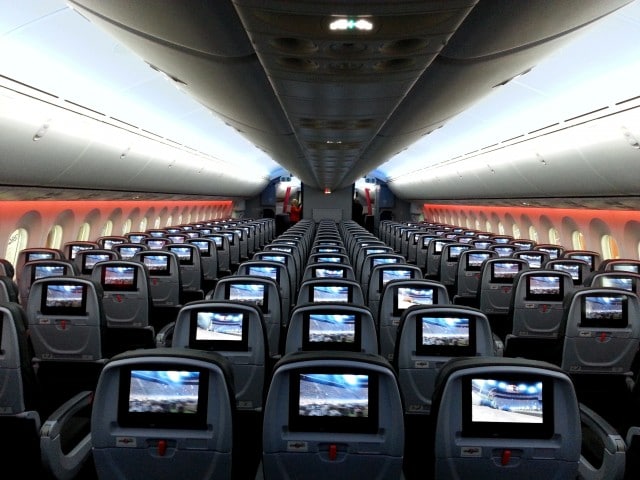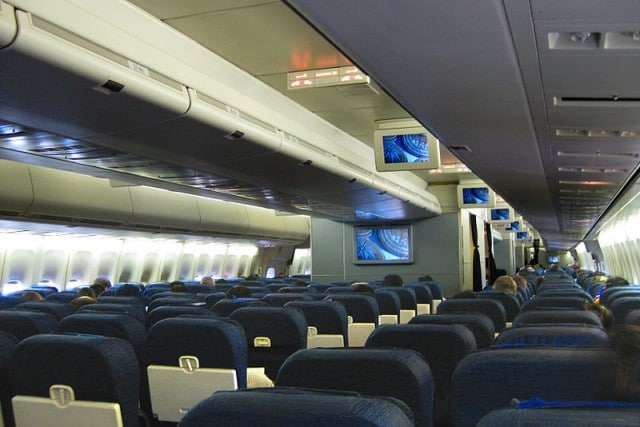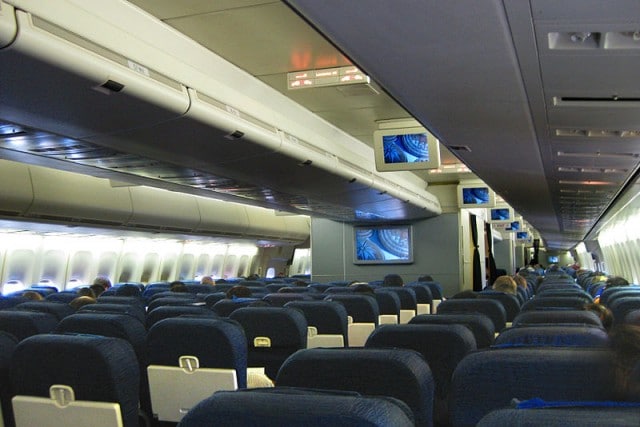Staying Connected at 30,000 Feet
Today’s article is written by Matthew Levenson, who is interested in aircraft from a passenger point of view rather than the pilot’s. But I think this is a subject close to most of our hearts: staying connected at 30,000 feet!
Over the past decade, the rollout of free Wi-Fi services in our towns and cities has delivered all of us with unprecedented connectivity so that we can stay in touch with loved ones and even play online games in our downtime.
Most of our airports now have Wi-Fi facilities to make the inevitable airline delays a little more bearable. But until recently, our airlines have proved relatively resistant to including complementary Wi-Fi with their online entertainments.

However, there are signs that this could be changing. It’s thought that nearly two-thirds of all flights in the US now have Wi-Fi facilities, and this number is slowly increasing across the world.
Such technologies are becoming increasingly important for airlines as they seek to improve their position in the evermore competitive global flight market. As recently as last week Air Canada announced that they would be extending Wi-Fi to all international flights, whilst Qantas have also unveiled their new free high-speed Wi-Fi plans.

These moves will be widely-welcomed by global travellers. Despite passenger entertainment services now including an impressive range of TV shows and movies, for the 21st century traveller to have their workplace and entertainment opportunities curtailed by lack of Wi-FI certainly seems somewhat backward.
Already, passengers are using availability of Wi-Fi to choose who they wish to fly with and over time we’ll see more comparisons such as Gizmodo’s ranking of airlines by Wi-Fi Service.
Apart from the possibilities of increased productivity through being able to host a video-chat session with a colleague over Skype, the commuter or holiday-maker would also be able to play online roulette games that work on a mobile phone from sites such as Betway so as to pass the time in a relaxed way whilst earning some extra travel money.

However, if these online possibilities seem welcome, it will certainly be some time before effective Wi-Fi on our planes becomes a problem-free reality. Many a global commuter has experienced a good deal of air rage thanks to substandard Wi-Fi, and American Airlines recently sued the Wi-Fi firm GoGo as a result of their online ineptitude.
In addition, Wi-Fi does you very little good if you don’t have power, and not all airlines are offering power points to their passengers, which is a rather obvious issue.
Such teething troubles are perhaps unsurprising given the complexity of the task of installing such new technologies in passenger airplanes.
Although the road to achieving universal free Wi-Fi on our planes is still some way off, it’s becoming easier for the passenger to check to see if an airline has the service. This is because travel sites such as Kayak now include the relevant Wi-Fi information so that passengers can book a hotel or play multi-player games whilst travelling at 30,000 feet.
If I had access to online roulette before we arrived at our holiday destination, I doubt we’d have any holiday money left! It sure would make the flight more interesting though.
Welcome to the future!








Personally, I HATE flying – as a passenger. Not much choice, I do not hold a valid licence any more. And if I want to snooze I usually am hemmed in between a few bozos with their electronic gizmos, poking me in the ribs each time they are manipulating the keyboard.
Do we really, really have to be messaging, talking or emailing to someone 20 hours a day?
Yes, I am grumpy I know. I used to have first officers who got upset because they were still programming the navigation computers if we were lucky enough to have a short taxi. My solution: program it for the airport of departure, the SID and the destination. There is always time to punch in the waypoints when airborne. But these young kids regard an aircraft as a large computer game, one that actually moves. They are not used to the good old VOR-DME. Although, to be honest, nowadays the flight plan tends to dispense with the VOR-DME. Waypoints only. The days are gone when a pilot could determine the route using the Jeppesen charts only, especially high altitude. RVSM has changed a lot.
I can boast that I have made an approach on a four-course range. There was still one in use in Marrakesh in Morocco in the ‘seventies. Four beams, sectors in between identified by morse “A” and “N”. Where the signals overlapped, the pilot heard one single sound. So the approach was flown using the headset. I forgot if A was to the left and N to the right to get back on the beam. There were markers to check the height. No glide path. But with a bit of practise it worked fine.
These young people get lost without the electronics. I personally know of a pilot who was F/O on a modern type of aircraft. It was his turn to be promoted. His first command was going to be on an older type, about to be phased out. It did have a rudimentary GPS, a requirement for all airliners even 10 years ago, but the main instruments were still a gyroscopic flight director and an HSI. He could not manage the step back into the 1980’s technology, failed his command check and became a disillusioned F/O again.
I am not overly fond of WiFi in the cabin. Can laptops hinder a quick evacuation? Can they cause an overload somewhere? Can they interfere with other systems? Probably not.
Still, I call a computer a “confuser”.
And they threaten to interfere with my life. Does everyone really have to know, in real time, where exactly I am, what I do, where I am going?
Even the natives on their desert island somewhere in the Pacific must have Wi-Fi and a McDonalds or they cannot be happy. Sites like Fa(r)cebook rob us of every bit of privacy and individuality.
So you guessed it: personally, I am not a fan of on-board WiFi.
I suppose it is a generation thing.
“Do we really, really have to be messaging, talking or emailing to someone 20 hours a day?” Not continuously, but it is nice to be able to check one’s messages every couple of hours or so! I would argue that WiFi on long haul flights is more of a necessity than it is on short flights. Long flights are boring and the internet is one of the greatest boredom alleviaters around! I can personally say that, thanks to the internet, I am almost never bored! I see that as a good thing!
As for the point about evacuation; I don’t see that as a problem as long as the laptops and tablets (these days it’s mostly tablets) are stowed during the critical phases of flight. There’s a pretty easy way to make sure that happens; Turn off the WiFi during takeoff and landing! :D